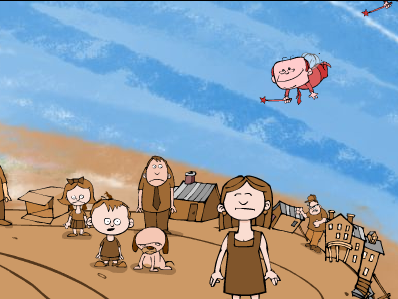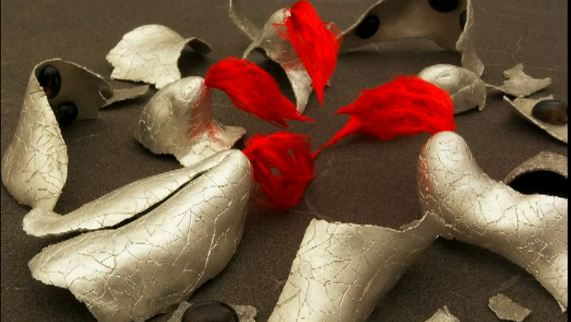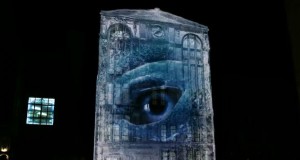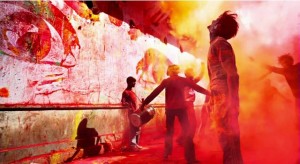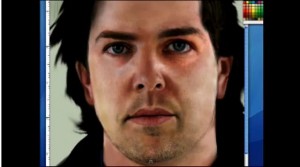Anna Graceman on “America’s Got Talent”
Anna Gracemann is an 11-year-old singer-songwriter, born and raised in the beautiful Southeast Alaska. Her mother played classical music to her before she was born and after she was born her mother spent many hours singing, reading and playing music to her. At just a few months old her parents started displaying flashcards for her to read and gain word association. All of this together sparked her love of music and words and her natural confidence in the medium of music and song.
Much of the inspiration from her songs comes from her home in Alaska, as well as from the work of other musicians and her family and friends.“Take Me Where I want To Go” and “Paradise” draw on imagery from hikes and walks in Alaska in the company of family and friends.
She enjoys seeing how much people like her music and is encouraged by the fact that through her music she has the ability to affect people in a positive way, but says even if she had no audience, she would still feel the need to perform “it is also about expressing what is inside of me. I think that even if no one listened to my music; I would still do it. It is something inside of me that I just need to do.”
She has always loved to sing and at 18 months was singing the melody of complete songs. By the time she was 2 she was happy to sing to large groups, her audiences astonished at her ability at such a young age. At 4 she started learning to play the piano seriously, writing her first song “So I Cried” at 6 years old while still in first grade. Her deep lyrics and early understanding of musical composition has amazed many.
As a rule in her house there is no cable T.V. and other entertainment is limited, so when Anna is not playing her piano or singing she spends many hours reading and writing stories. She loves to write mythical stories. She also enjoys swimming or riding her bike in the summer and skiing or sledding in the winter. She is a great down hill skier! She spends many hours practicing her music: singing, playing piano and writing. She currently takes classical piano lessons and is learning how to play the guitar. She loves her Big Baby Taylor!
She has a love of learning, encouraged through the Montessori program and wants to be a singer, song writer and story writer in the future. Many thanks to her piano teachers, school teachers, school counselors, parents and other family members for their encouraging confidence in her that has and still motivates her success.
Anna Graceman loves her homeland Alaska. She is moved by the beautiful and stunning scenery and devoted and friendly community. Anna has a gift that she wants to share with all in hopes that through her music she can make a difference in this world; that she will encourage others, especially children, to find and nurture their gift and use those gifts for good on this earth.
She has written many songs, both lyrical and instrumental, 35 of which have been released in various forms.
Some of the songs she has written:
“Army of One”
“Believe”
“Dancing on Cobblestones”
“Don’t Bring Me Down”
“Dressed in Blue”
“Give me your Heart”
“Have I Told You?”
“Heart and Hands”
“Hush Little Baby”
“It’s Love”
“Longer and Longer”
“Me and My Piano”
“Silly Dreamer”
“So I Cried”
“Take Me Where I want To Go”
“Paradise”
“You Knew Me”
“You’re My Gift for Always”
References:
Jaclyn Salamone interview with Ana Graceman
Read MoreMark Fiore: Trickle Down Tales
Mark Fiore is an American political cartoonist specialing in Flash-animated political cartoons for which the Wall Street Journal recently called him the “undisputed guru of the form”. His cartoons have appeared in many American papers and a number of websites.
After studying political science at Colorado College, he started his professional life by drawing political cartoons for newspapers ranging from the Washington Post to the Los Angeles Times. In the 1990s he began to experiment with animating his political cartoons and in 2001 he left newspapers for animated online cartoons. In 2010 he won a Pulitzer Prize, the first ever for his genre of editorial cartoons.
He is a member of the Association of American Editorial Cartoonists. Fiore’s comics were included in Ted Rall’s Attitude 3: The New Subversive Online Cartoonists, along with other web-comics such as Dinosaur Comics, Diesel Sweeties, Fetus-X, and The Perry Bible Fellowship. In their review of Attitude 3, the American Library Association’s Booklist called Fiore’s cartoons a standout for their “unique and personal” vision
His work can be seen on his website wwww.markfiore.com/
On his website you can comment on individual comics, or leave a verbal opinion in the Shout Back!” section of the site, or find ideas for things you can do about individual issues ion the “Do Something!” page.
Read MoreShea Hembrey: How I became 100 artists
“Seek” is a new international biennale consisting of hundreds of works of art, by 100 artists with widely varying approaches, styles and techniques.
On this level it works as an intriguing exploration of interesting work by unknown artists from across the world, selected by curators Calinda Salazar and Fletcher Ramsey.
The surprise comes when you realise that they all work together as a single artistic statement, skillfully created and curated by a one artist, with plenty of warm wit and humour for good measure.
The artist, Shea Hembrey, (born 1974) grew up in rural Hickory Grove, Arkansas in a family of farmers, factory workers, hunters, trappers, musicians, and cockfighters.
His interest in nature and an early fascination with birds (as a teenager he was a licensed breeder of migratory waterfowl) led his explorations as an artist on a journey to try to appreciate the influence of nature on humans and to understand how they have learnt from it and appropriated its forms for their own development.
Folk and Faith and Free Association
He has produced works on folk and faith healing inspired by his healer grandfather, and his view of art was profoundly changed while studying Maori art while he was a Rotary International Ambassadorial Scholar to New Zealand.
Hembrey focuses his concentration on a single project at a time allowing his research into the subject matter to direct the media and methods of the final product. His fascination with birds led to his exhibition “Mirror Nests”, a series of metal replicas of bird nests exhibited at Cornell University’s Lab of Ornithology observatory.
Exploring the self-obsession of modern art elitists, the visual language of different cultures, social stereotypes and the variety of methods artists choose to express themselves as individuals resulted in his current “Biennial” – “Seek: 100 in 2011—The Inaugural Exhibition”.
“I love contemporary art, but I am often frustrated at the contemporary art world and the contemporary art scene.”
After travelling around Europe to see the “major art exhibitions that have the pulse of what is supposed to be going on in the art world, I was struck by going to so many one after the other with some clarity of what it was that I was longing for.”
“Two of the main things: I was longing for more work that was appealing to a broad public, that was accessible, and the second thing was: more exquisite craftsmanship and technique.”
The Mimov Test and the Three H’s
After considering what the ingredients would be that he thought would make a perfect Biennale, “I decided: I’m going to start my own biennale. I’m going to start it and direct it and get it going in the world… I have to have some criteria of how to choose work.
Amongst all the criteria I have there are two main things, one of them I call my Mimov Test – I imagine explaining a work of art to my grandmother in five minutes, and if I can’t explain it in five minutes then it’s too obtuse or esoteric and it hasn’t been refined enough yet, it needs to be worked on until it can speak fluently.”
“My second set of criteria would be the three H’s, which is : Head, Heart and Hands. Great art would have Head; it would have interesting intellectual ideas and concepts. It would have Heart in that it would have passion and heart and soul, and it would have Hand in that it would be greatly crafted.”
Read MoreA Different Berlin Wall
This promotional multi-media event “LG Optimus Hyper Facade in Berlin” created by phone company LG and projected onto a building in Berlin incorporates some very imaginative high-tech imagery.
The dramatic multi-sensory approach and intelligent and playful scripting heightens the impression of “audience participation” in an alternative dimension.
It also gives new meaning to the term: “Berlin Wall” – a wonder-filled example of how applied creative imagination can provide the “magic” that helps to re-structure reality in new and exciting ways.
Can Art Change the World?
Parisian photographer and street artist “JR” has undertaken many projects that have spanned the planet, using giant billboard sized monochromatic photographs in unexpected places, in positions of high visibility.
He started out as a graffiti artist in Paris, but after finding a camera on the Metro, began taking photographs documenting his friends painting graffiti on the rooftops and walls of the city..
He now mixes the two mediums of photography and graffiti, calling himself a “photograffeur”, posting giant black and white photographs in public places.
The Largest Illegal Photo Exhibition in the World
His “Face 2 Face” project was dubbed “the largest illegal photo exhibition in the world” in which the border wall which runs the length of the disputed area between Israel and Palestine became a gallery of giant portraits of Jews and Palestinians of all denominations and types, grinning and pulling faces into the camera and posted side by side along large stretches of the wall.
Part of this is a giant triptych of a rabbi, a priest and an immam wearing intentionally comic expressions. The message is simple but powerful: there is far more that unites humanity than that which divides it. “It’s about breaking down barriers,” JR says. “With humour, there is life.”
Women are Heroes
His more recent “Women are Heroes” project took him to meet, work with and photograph women in slums and war-torn, poverty stricken communities across the world, using art as a medium to reaffirm the positive, creative side of humanity.
“They keep on asking you: what is the purpose of your project? Are you an NGO? are you the media? … Art. Just an artist…
Some who understood the project will explain it to others: to a man who did not understand I heard someone said:
“You know, You’ve been here for a few hours trying to understand this thing with your fellows. During that time, you haven’t think about what you’re going to eat tomorrow. This is art.”
“Women are Heroes” created a new dynamic in each of the communities and the women kept that dynamic after we left. For example, we created book, not for sale, but that all the community would get but to get it they would have to make it signed by one of the women…
Its really important point to me is that I don’t use any brands or corporate sponsor, so I have no responsibility to anyone but myself and the sisters…
They made me promise… please, make our story travel with you…so I did…look… that’s Paris, that’s Rio… that’s London… New York…”
Turn the World Inside Out – Participate in a Global Project
His latest project is one that everyone can participate in:
“I wish for you to stand up for what you care about by participating in a global art project, and together we’ll turn the world.. INSIDE OUT.
When we act together, the whole thing is more than the sum of the parts.
So I hope that together we will create something that the world will remember, and this starts right now, and depends on you.”
Use the link below to find out how you can participate.
Read MorePhoto Realism Speed Painting by Chris Scalf
“I did this as an exercise for the purpose of, quite simply, practice. It’s been a while since I attempted anything photo-real… It’s very good to do this kind of thing because it strengthens your freehand drawing abilities, as well as developing an eye for detail.
Freehand drawn in photoshop cs2 (from a reference photo off to the side) with a wacom tablet.
time-lapsed… real time was about 3 and a half hours. “
Why “photorealism”, Why not just use a camera?
The answer is simple. I’ve made the point many times in my replies, comments and descriptions. But I’ll make it clearer here for those who do not understand: It’s for practice. It is the same as a musician practicing scales, so that he can write better songs…Or even a musician who plays a song from another famous musician on a CD– also to make himself better… To inspire/aspire to become better at the craft/skill.
It’s the same with the art. Sure I am just acting like a human camera and re-creating every detail and color I see– but that’s where the conditioning is. Same as that musician that is replicating the sounds of a scale or someone else’s song. (Why not just say to the musician, “why bother playing that song? Just put in the CD?” )
The fact that it is all freehand and controlled by my judgement makes it so valuable to attempt…. I have to be able to see and recognize exact tones of color, and be able to recreate it with extreme accuracy from scratch. I must be able to recognize every detail and the consistency that makes that detail REAL. It strengthens my abilities to be able to create works of art that come from my imagination.
Aside from practice, it is also a very commonly sought skill in the commercial trades to be able to mimic real-life with art. In addition to that, it does entertain the majority.
So there you go.”
| About: Chris Scalf |


